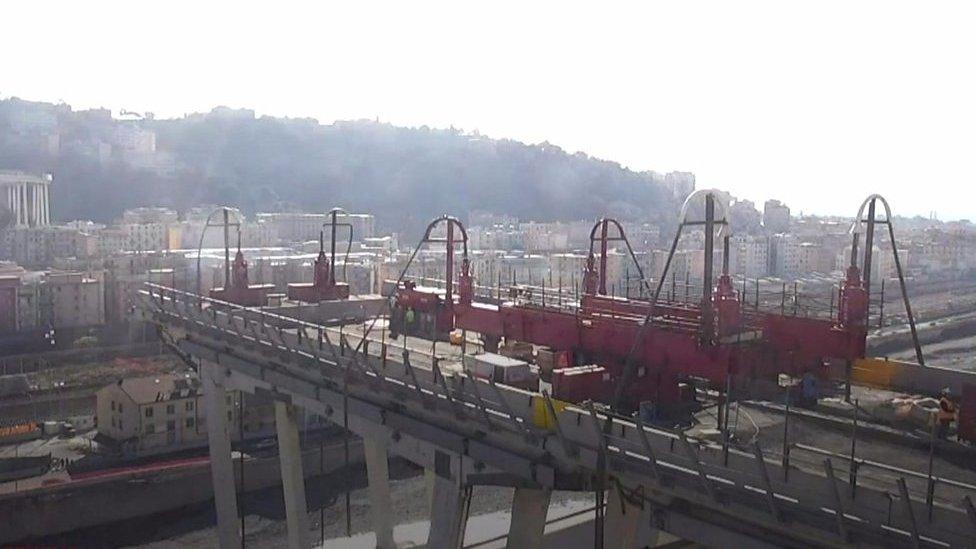Morandi Genoa bridge: Towers demolished after evacuations
- Published
It took seconds for the remaining two towers of the Morandi bridge to be demolished
Demolition experts have blown up the remains of the giant Morandi bridge in the Italian city of Genoa, nearly a year after the structure collapsed.
Thousands of people were evacuated ahead of explosions which brought down two large towers consisting of about 4,500 tonnes of concrete and steel.
Water tanks were placed around the towers to prevent the spread of dust.
Forty-three people were killed when part of the bridge, and cars travelling along it, fell 45m (148ft) last August.
It prompted a fierce debate about the safety of Italy's infrastructure.
The Morandi bridge was a critical structure in Genoa, serving the busy A10 motorway network that serves the Italian Riviera and links northern Italy to France.
How did it happen?
Hundreds of residents, including pregnant women and the elderly, were told to leave on Thursday ahead of the demolition.
More than 3,400 others were evacuated on Friday morning from the areas surrounding the two towers in preparation for the operation.
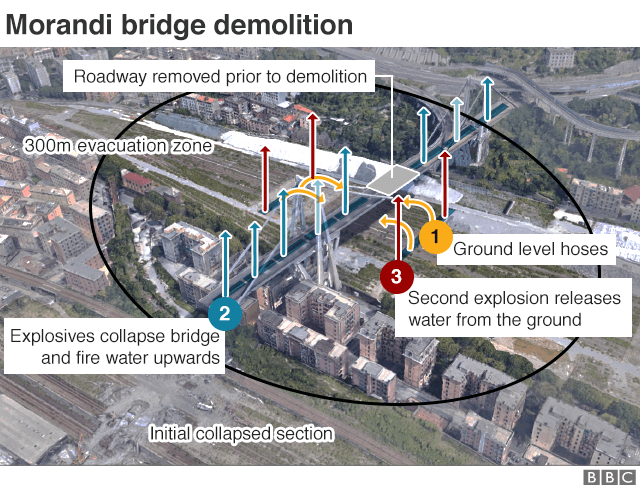
Roads within a 300m (984ft) radius of the demolition site were also closed.
Explosives were attached to the legs of the towers and the parts of the bridge still standing.
Minutes before the explosions, sirens rang out and water began to spray the structure from tanks all around the base.
Then, at 09:37 (07:37 GMT), the towers were gone. It took just eight seconds for the structure to collapse in a swirling cloud of dust.
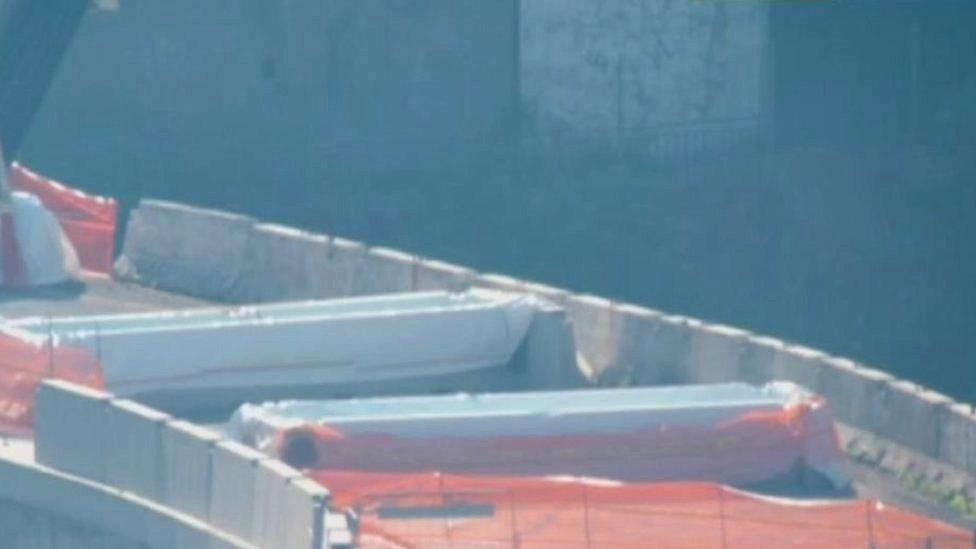
Close-up TV pictures showed water tanks in place on the remains of the bridge and around the base
The demolition of towers 10 and 11 on Morandi bridge took place 37 minutes late because officials were concerned that one elderly resident had refused to leave.
In the end the man's home was found empty, but two non-EU citizens were found in another building watching TV, Corriere website reported. They were completely unaware of the evacuation.
Genoa mayor Marco Bucci announced after the blasts that everything had gone according to plan, although checks would be made during the day.
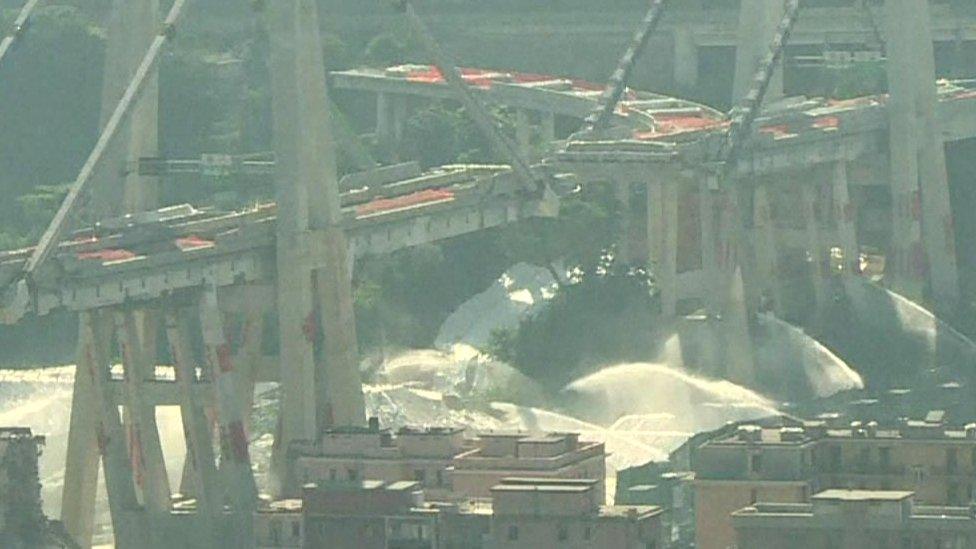
Then fountains of water sprayed the base of the structure before the blasts
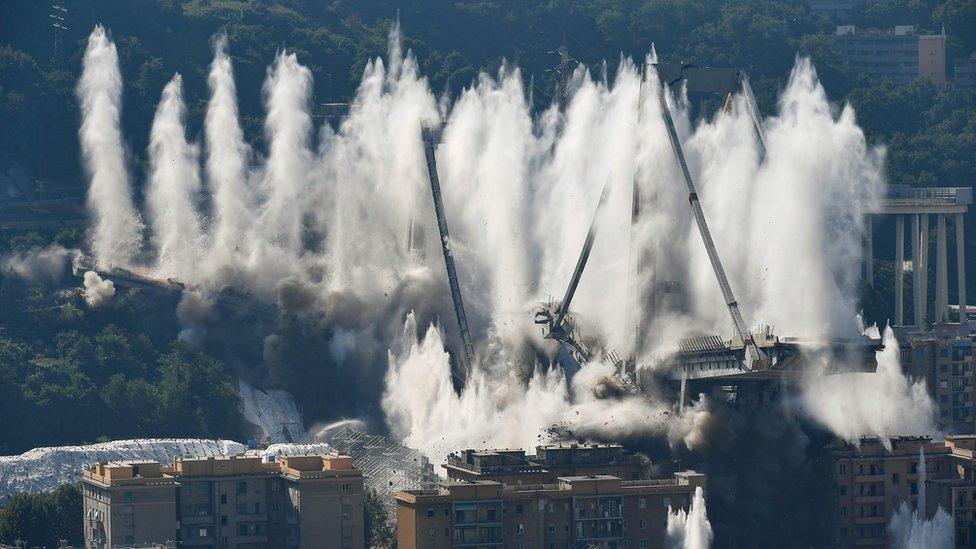
It took just eight seconds for the entire structure to go down
Dozens of water tanks and sacks were placed alongside and beneath the structure, with the aim of preventing the spread of fine dust by creating a wall of water some 50m high when the explosives are detonated.
Italy's deputy prime ministers Matteo Salvini and Luigi Di Maio joined onlookers in Genoa for the demolition, broadcast live on Italian TV.
Locals will be permitted to return later on Friday if the area is considered safe.
Parts of the structure that passed over residential homes and business, roads and railway lines were dismantled earlier this year.
What happened to the bridge?
During heavy rainfall on 14 August 2018, a 200m (656ft) section of the Morandi bridge collapsed along with one of its three main supporting towers, crushing dozens of vehicles in busy traffic.

Debris fell on railway lines, a river and a warehouse. A total of 43 people lost their lives.
Hundreds of firefighters attended the scene with lifting gear, climbing equipment and sniffer dogs to try to locate survivors and bodies.
Some residents living in housing blocks under one of the bridge's pillars were initially told that it was cracking and that their homes were at risk.
Following the tragedy, it emerged that the steel rods suspending the 1.2km bridge had been slowly decaying over decades and were badly damaged by the sea air.
The degradation may have also been compounded by heavy traffic on the bridge, over which about 25 million vehicles passed every year.
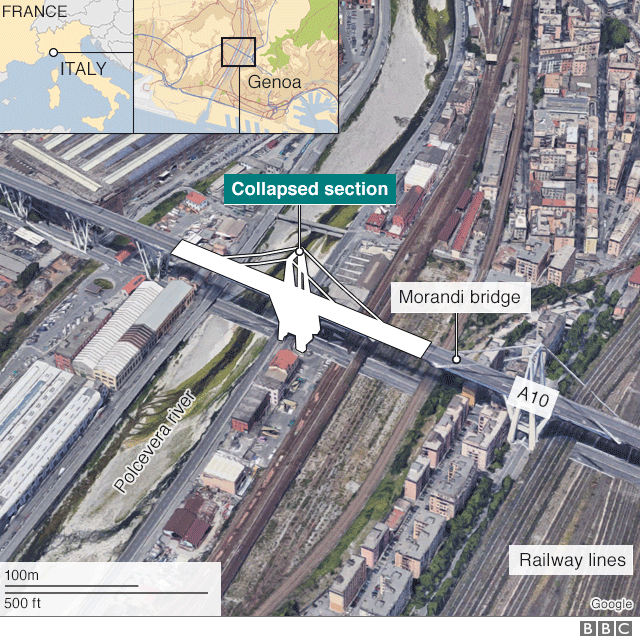
The bridge, designed by Ricardo Morandi, was completed in 1967, but restructuring work was done in 2016 and some major repairs were also carried out in the 1990s.

Such a bridge is normally designed to last for at least 100 years.
In December, renowned Italian architect Renzo Piano agreed to oversee the construction of a replacement bridge, expected to be Europe's most expensive.
- Published18 December 2018
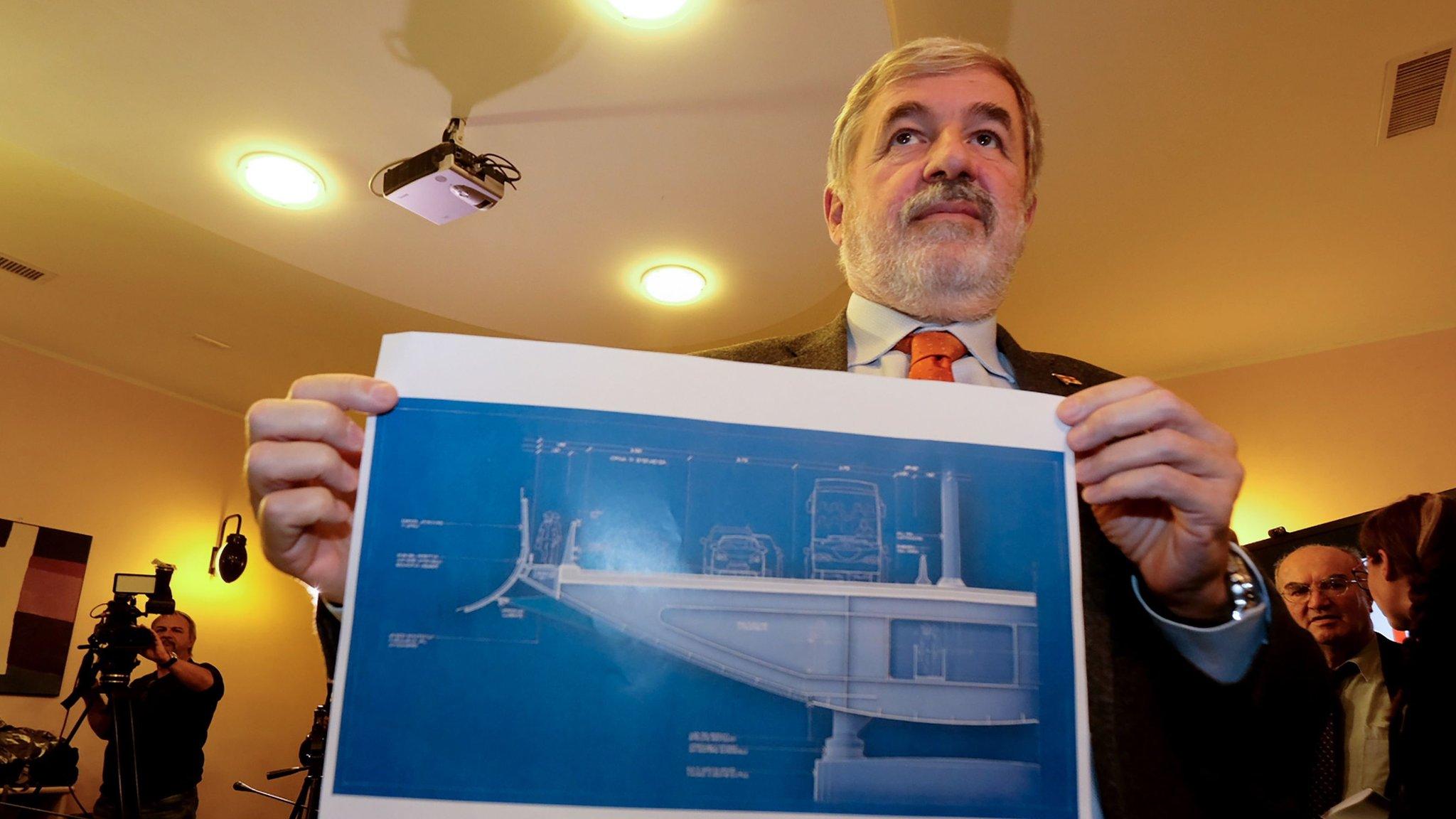
- Published19 August 2018
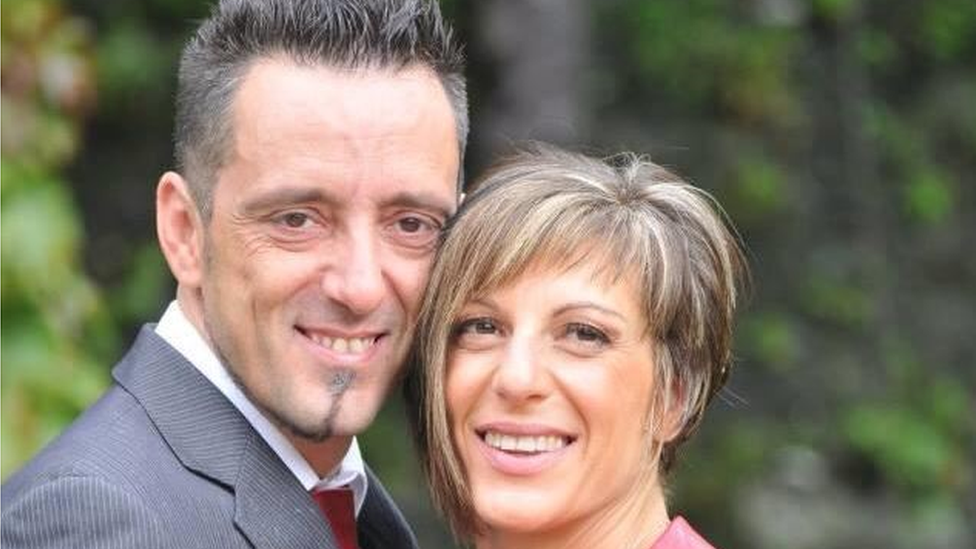
- Published16 August 2018
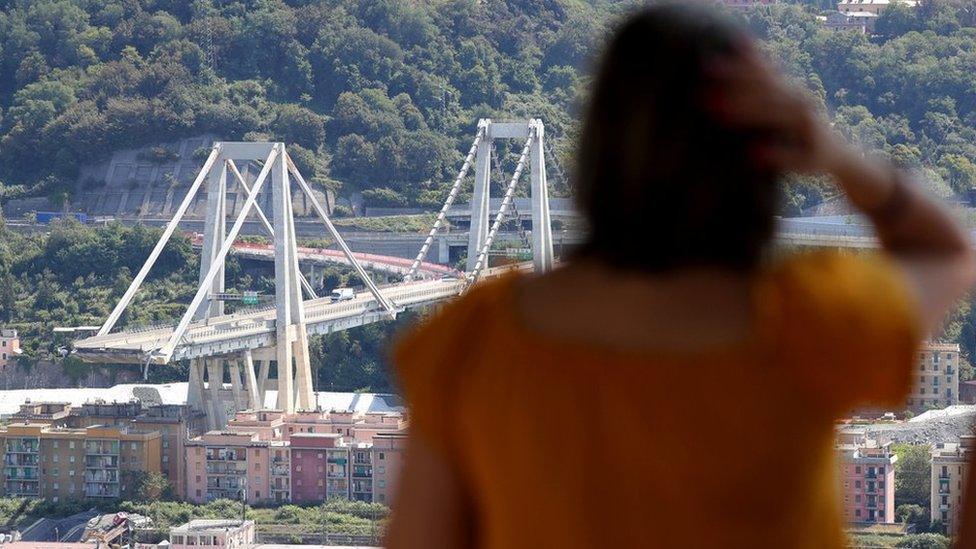
- Published20 August 2018

- Published8 February 2019
